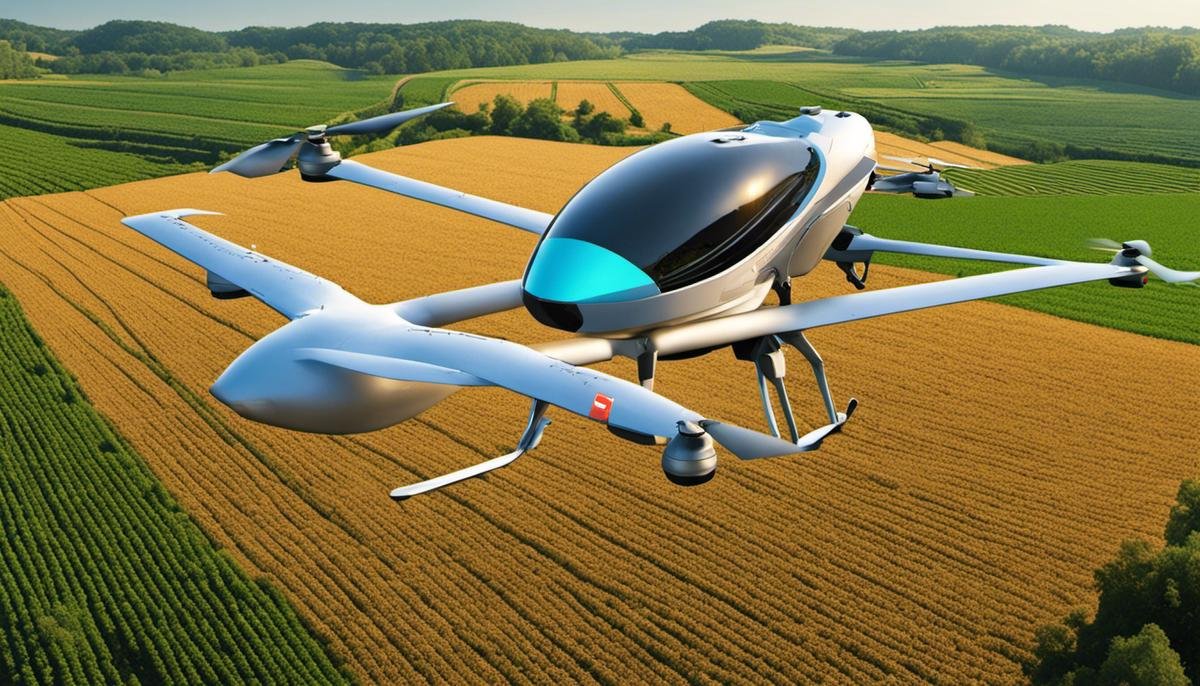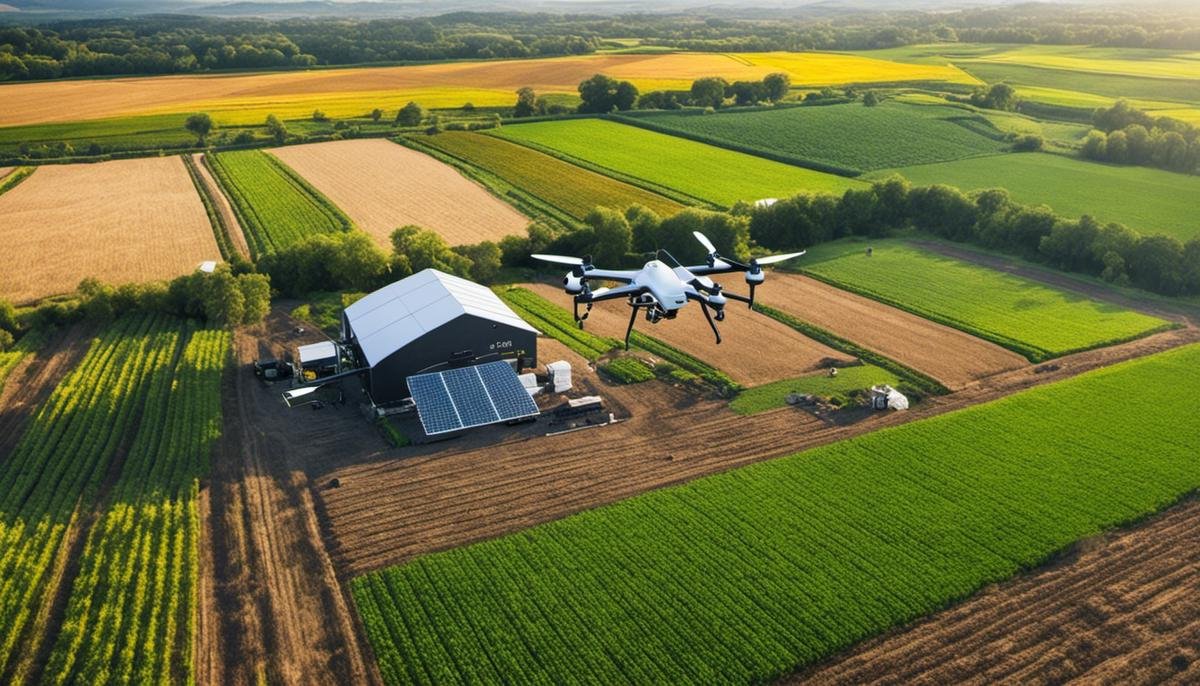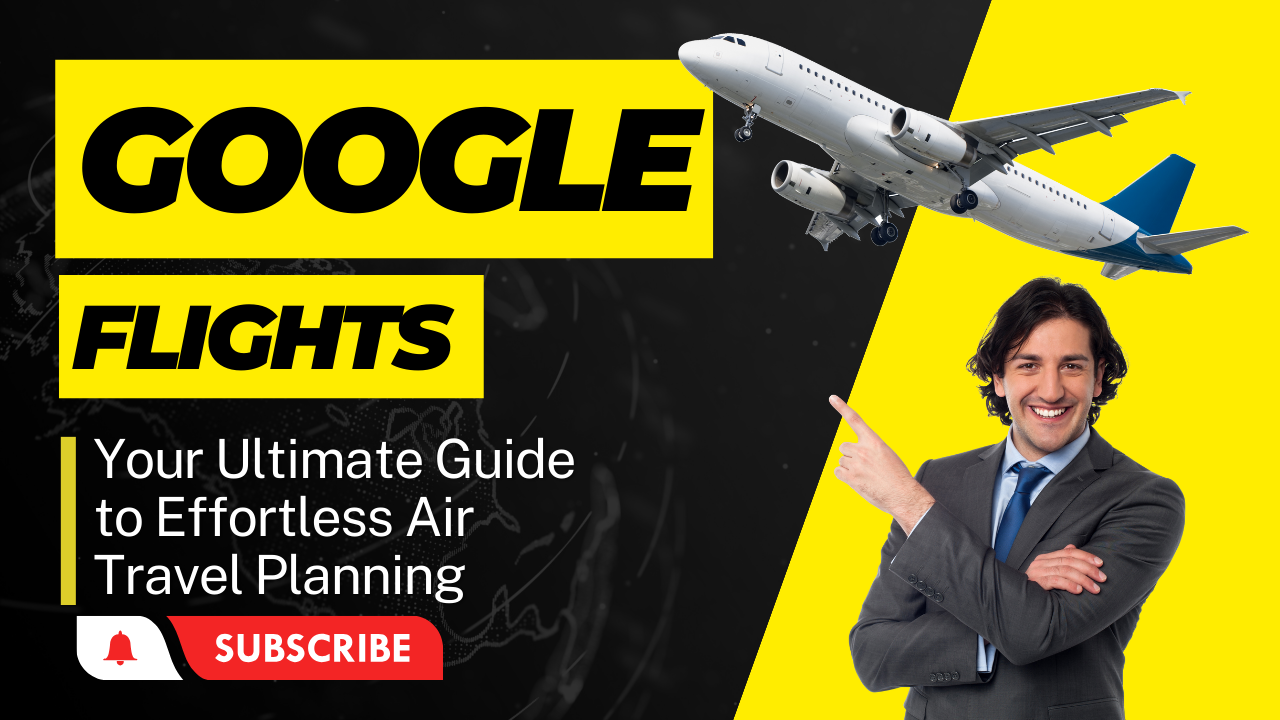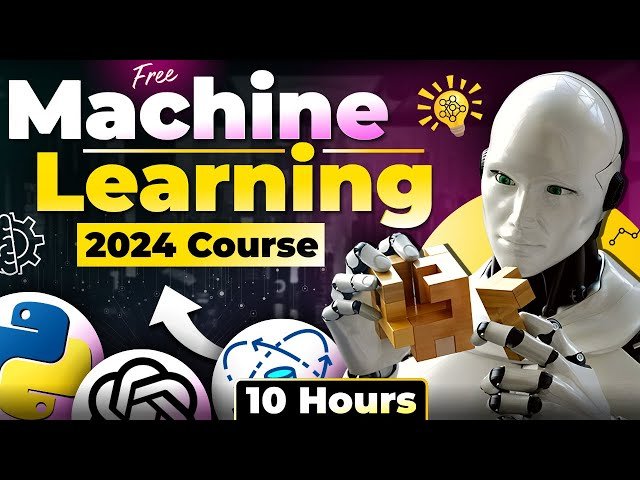As we navigate through the exciting landscape of the 21st century, a notable advancement stands out in the face of agriculture —Artificial Intelligence, more commonly referred to as AI. This technology, once confined to the realms of science fiction, is now revolutionizing the way we cultivate our land, produce our food, and manage our resources. From predictive analytics improving the efficiency of farming operations to robotic applications enhancing livestock management, AI is steadily transforming this key sector. Yet, as with all revolutions, there remain questions around labor displacement, privacy, and economic disparity. In this discourse, we will journey through understanding the implementation of AI in agriculture, its groundbreaking applications, associated challenges and the ethical considerations, as well as what the future may hold for AI-driven farming.
Understanding AI and its Utilization in Agriculture
Understanding AI: Its Framework and Capabilities
Artificial Intelligence (AI) refers to the capability of machines or computers to mimic and learn from human intelligence. It encompasses the ability to learn through experience, adjusting to new inputs, performing human-like tasks, and making informed decisions independently. Essentially, AI systems streamline, automate, and enhance the tasks that would otherwise require human intelligence.
AI in Agriculture: A Technological Revolution
In agriculture, AI has the potential to revolutionize the sector by automating complex tasks. It opens up new avenues to boost productivity, efficiency, and sustainability, which are critical aspects to meet the growing demand for food as the global population increases. By processing and learning from vast amounts of data from different sources, AI supports farmers in making more informed decisions about their farming practices.
AI-Powered Tools for Optimal Agriculture Operations
AI-powered tools like predictive analytics, precision farming, and robotics play a considerable role in improving the agriculture sector. Predictive analytics refers to the practice of extracting information from existing data sets to predict future outcomes. In the case of agriculture, this data could be analysis of weather patterns, soil conditions, crop performance in similar climates, etc. This empowers farmers in decision-making processes related to crop choice, pest/disease prevention, irrigation, and harvest timing.
Precision farming, another application of AI, utilizes sensors and GPS technologies to manage and monitor the condition of crops, weather, and soil at a granular level. This approach enables efficient use of resources such as water and fertilizer, thereby reducing costs and minimizing impact on the environment.
Robotics in agriculture embodies machines that can assist in tasks like planting, harvesting, and weeding. These robots can function round-the-clock, managing laborious tasks efficiently and cost-effectively. Additionally, drones serve as the eyes in the sky for farmers, collecting data from large swathes of land which can be used for assessing crop health, planning irrigation schedules, or finding signs of pest infestation.
Programming AI for Efficient Agriculture Operations
The programming of these AI tools involves complex algorithms that consume and learn from vast volumes of data. They are tailored to analyze patterns and generate insights. For example, a predictive analytics tool may be programmed to analyze past weather data for a specific geographical area to estimate future climate patterns, enabling farmers to plan their sowing and harvesting. Similarly, a robot might be programmed to work its way through a farm, identifying and clearing weeds while it navigates.
Impact and Value of AI in Agriculture
AI in farming has brought about significant advancements, be it from precise watering systems, efficient pest management, or advanced harvesting techniques. AI technologies are consistently evolving, and the future of agriculture is promising with automation, accuracy, and sustainability at the forefront. With the right implementation strategies, these AI technologies can answer significant agricultural challenges, driving savings both in terms of time and cost for farmers. As we look forward, the integration of AI with traditional farming practices can assure optimized production, significantly contributing to global food security.
Navigating the Complex World of AI in Agriculture
AI in agriculture presents a groundbreaking opportunity for significant advancements, but naturally, like any other technology, it comes with its unique set of challenges. The major obstacles include not only high initial setup costs, but also the necessity for a reliable digital infrastructure. Further complications arise from the issues of data security and privacy, and the existing resistance to change from traditional farming communities. Additionally, the successful utilization of this cutting-edge technology also relies on having access to skilled personnel for implementation and operation. Addressing and overcoming these significant challenges is a crucial next step towards fully harnessing the potential of AI within the agricultural sector.

Innovative AI Applications Revolutionizing Farming and Agriculture
Revolutionizing Crop Monitoring with AI
One of the most impactful applications of AI in agriculture is in the field of crop monitoring. Through the use of agricultural drones equipped with AI technology, crop surveying has been elevated to a new level. These drones are able to traverse large farmlands in real time, capturing vital data pertaining to crop health, extent of pest infestations, and soil vitality. They take high-resolution imagery which is then analyzed by AI software to detect even the minutest signs of plant stress, which may otherwise go unnoticed by the human eye. Based on the data provided, farmers are empowered to make well-informed decisions about pest control strategies, irrigation requirements, and ideal harvesting times, thus culminating in improved crop yields.
Automated Irrigation Systems
AI-driven irrigation systems are transforming agriculture by optimizing water usage. These systems utilize sensors placed around the fields to monitor soil moisture levels. This real-time data is then analyzed by AI algorithms to determine precise irrigation schedules, ensuring crops receive the exact amount of water they need. By preventing both overwatering and underwatering, automated irrigation systems help conserve water, improve crop health, and increase yield.
Livestock Management
In the arena of livestock management, AI applications play a pivotal role in improving animal health and reducing labor costs. AI-powered wearable devices, similar to the fitness trackers used by humans, are now common in dairy farms. These devices track vital statistics such as heart rate, temperature, and eating habits. AI algorithms process this data and alert farmers when the animals show signs of illness, stress, or if cows are ready for insemination, eliminating guesswork and facilitating quicker response times.
Moreover, AI-driven image recognition systems are being used to monitor livestock numbers, detect missing animals, and spot abnormal behavior. This technology is particularly beneficial for large-scale pastoral farms where manual monitoring would be labor-intensive and time-consuming.
Data-Driven Agriculture
AI’s ability to analyze large amounts of data is enhancing decision-making capacities in agriculture. Farmers can now use AI tools to predict crop yields based on multiple variables such as soil type, weather patterns, and crop rotation history. These insights enable farmers to plan ahead, mitigate risks, and ensure optimal use of resources.
Benefits of AI in Agriculture
AI’s adoption in agriculture has far-reaching benefits. It allows farmers to increase crop yield by identifying and addressing issues promptly using data from drones and sensors. Automated systems enable efficient resource usage by scheduling precision irrigation and monitoring livestock health, reducing waste and the need for manual labor. Moreover, data analysis aids farmers in making informed decisions and predictions about future yields.
However, the most notable advantage of AI in agriculture is its potential to achieve sustainable farming. By optimizing resource usage and minimizing waste through smart farming practices, AI plays a crucial role in promoting eco-friendly agriculture practices. It substantially reduces the industry’s carbon footprint, paving the way for a sustainable future.
To sum it up, the advent of artificial intelligence in agriculture signifies a new era of precision farming. The pressure to attain higher, more sustainable yields has necessitated technological innovation. In this context, AI serves as a crucial tool. Its applications, from crop-monitoring drones and AI-powered irrigation systems to advanced livestock management techniques, have the potential to redefine traditional farming methods.

Challenges and Ethical Considerations of AI in Agriculture
The Implications of AI on the Agricultural Workforce
Embracing artificial intelligence in the agricultural domain bears the potential to revamp long-standing farming practices but also raises critical questions about its consequences. The major concern centers around labor displacement, as technology assumes tasks traditionally carried out by humans. The prospect of job losses, particularly in rural landscapes that primarily rely on farming for sustenance, is daunting. While machines can efficiently substitute human physical labor, there’s considerable need for upskilling to operate, manage and maintain these technologically advanced systems. It is, therefore, vital to design and implement strategies focusing on the re-skilling and up-skilling of agricultural workforce as a proactive measure against any negative impact.
AI Agriculture and Privacy Concerns
As farms become digitized, farm data is increasingly being collected and analyzed by AI systems. While this digital revolution provides a wealth of insights leading to increased productivity and sustainability, it also raises serious privacy and data ownership issues. Much uncertainty exists about who owns the data generated by agricultural AI: Is it the farmer, the AI company or third-party organizations? This poses risks of misuse of personal and proprietary data. Regulations are lagging that protect the data rights of farmers which should be addressed proactively to ensure data privacy.
AI and Economic Disparity in Agriculture
Economically, the challenges associated with the implementation of AI in agriculture can deepen the income disparities between well-off farmers and less wealthy ones. The high upfront cost of AI technologies is not affordable for all. This leads to concerns that only wealthy farmers or corporations can afford these technologies, leading to a wider wealth gap within the agricultural sector. It’s essential, therefore, for policymakers to ensure that the benefits of AI in agriculture are accessible to all farmers, not just a select few.
Data Accuracy in AI Agriculture
Another issue that emerges with the rapid advance of AI in agriculture is data accuracy. AI, machine learning, and related technologies rely heavily on large datasets to function effectively. However, farming conditions can greatly vary from one location to another, such as soil type, local pests, and weather patterns. If AI models are built on inaccurate or insufficient data, it may lead to ineffective or even harmful farming recommendations. Therefore, robust and region-specific data collection methods are crucial to ensure the viability and success of AI in agriculture.
Ethical Concerns Surrounding AI in Agriculture
AI in agriculture presents us with both a myriad of opportunities and a set of challenges, warranting sincere ethical deliberation. While AI could potentially boost productivity, hike crop yields, and foster environmental sustainability, its implications on labor markets, privacy, economic disparity, and data accuracy cannot be overlooked. A triangulated collaboration among farmers, tech experts, and government officials is pivotal to formulate and implement legislation ensuring ethical development and deployment of AI, and a fair distribution of its subsequent advantages within farming communities.

Photo by simonkadula on Unsplash
The Future of AI in Agriculture
Current Trends: The Increasing Prevalence of AI Applications in Agriculture
We are currently observing an incredible surge in the deployment of AI technologies in the agricultural sector, a trend set to significantly expand in the future. Driven by the benefits of autonomous robots, drone technology, crop health monitoring, machine learning, and predictive analytics, the industry is steadily enhancing its crop yield and productivity. Additionally, it’s worth mentioning that these advances drastically diminish the demands of labor-intensive farming tasks, and provide a strategic edge in combating unpredictable weather events, pests, and diseases.
Technological Advancements: AI-based Farm Management Systems
In the not-so-distant future, we can expect AI-based farm management systems to become the norm. These systems may include AI-powered drones for crop surveillance, predicting needs for irrigation, and detecting plant diseases. Emerging technology giants and startups alike are competing to develop AI and IoT based agriculture technology solutions. These technologies will enable farmers to monitor the health of their crops in real time, take necessary action at the right time, and thus maximize their yields with minimized losses.
Collaboration: The Key to Innovation
The successful development of these technologies requires active collaboration between farmers, technologists, and policymakers. Farmers bring their expertise and experience, technologists bring their skills and innovative ideas, and policymakers bring necessary regulations and guidelines. This collaboration ensures the creation of AI technologies that are practical, based on real needs, and for the benefit of all parties involved.
Challenges and Ethical Considerations
While technological advancements in AI can greatly benefit agriculture, the future will also pose several challenges that need to be addressed. The most popular is the digital divide between large enterprises and small farmers, and between developed and developing countries. Access to AI technologies remains a daunting challenge for smaller scale farmers and farmers in developing countries, raising questions of equity and fairness.
Another significant challenge is the ethical considerations associated with the use of AI in agriculture. These include issues such as data privacy and ownership – who owns the data generated by these technologies and how the information is being used. Policymakers must collaborate with technology companies and agriculturalists not only to resolve these issues, but to provide a transparent regulatory framework that drives beneficial and fair use of AI in the agricultural sector.
Beyond the Decade : Future Aspects
Looking beyond the upcoming decade, we can anticipate a future where AI becomes integral to all aspects of agriculture. From precision farming to predictive analytics in crop management; from advanced pest control to sustainable use of resources, the possibilities are limitless. Policies and guidelines will evolve along with these advancements, providing a balanced and equitable platform for AI in agriculture. The trend is clear – the future of agriculture is AI-driven, and it holds great promise for a sustainable and productive future in farming.

As we move towards an increasingly digital future, the integration of AI in agriculture is an irresistible trend that promises a multitude of benefits such as increased yields and reduced resource usage. Yet, it demands careful consideration and cooperation between farmers, technologists, and policymakers to meet its challenges head-on. Issues on labor displacement, privacy, economic disparities, and data accuracy should not be neglected. By addressing these challenges, we pave the way for a farming industry that thrives on technology, champions sustainability and maximizes efficiency. Touching the lives of everyone from the farmer in the field to the consumer in the supermarket, the careful and ethical advancement of AI in agriculture is a task that truly belongs to us all.


